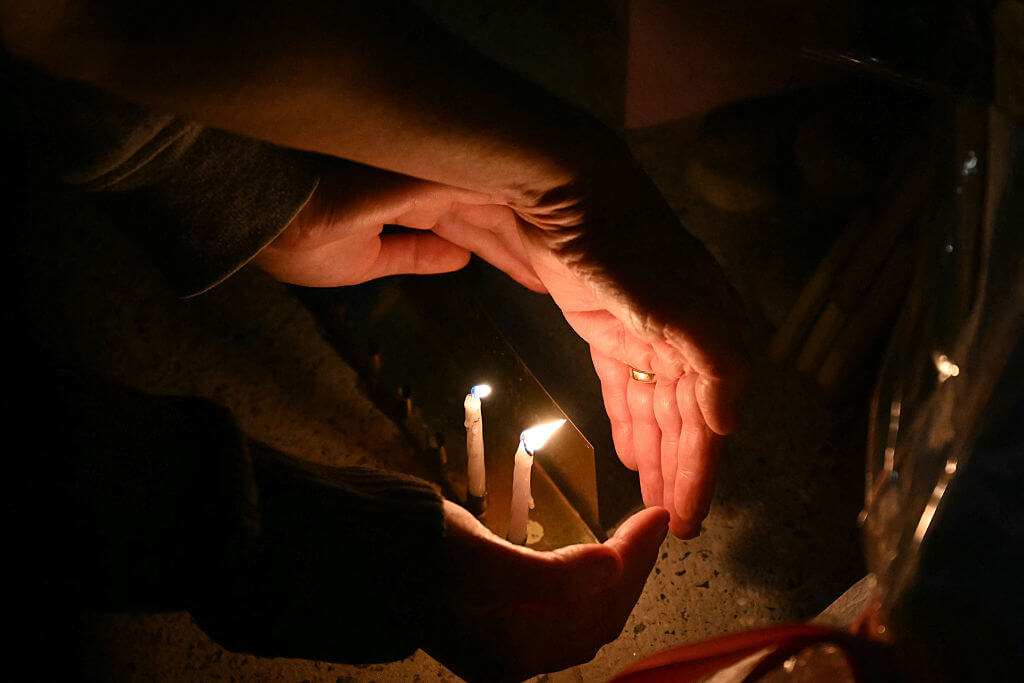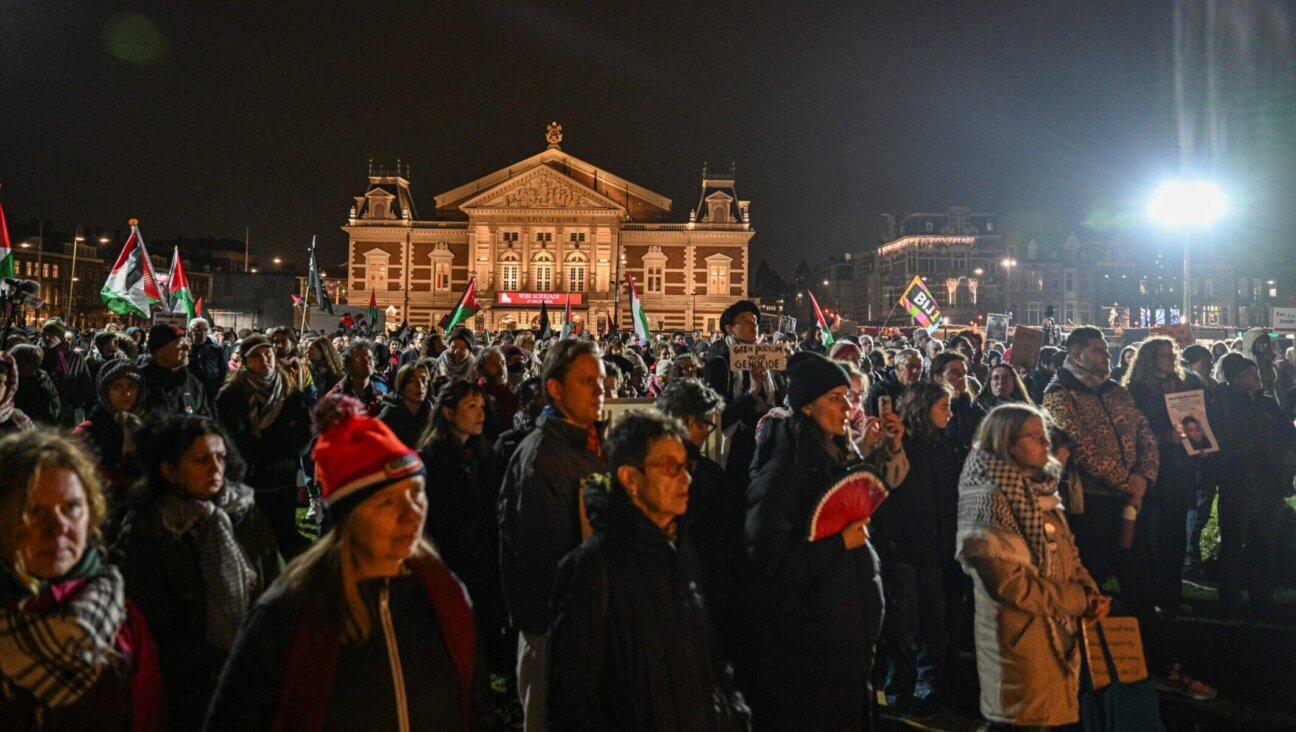March of the Living Exploits — Like 9/11 Museum

Graphic by Angelie Zaslavsky
March of the Living participants visit Auschwitz in 2009 / Yossi Selliger
This year, I made the difficult decision not to join my high school classmates on March of the Living, an organized trip that takes students to Poland’s death camps and then on to Israel. But it wasn’t until I read Meg Bloom Glasser’s opinion piece, which laments the new 9/11 Museum’s approach to memorializing, that I fully understood why.
The word Bloom Glasser uses is “spectacle.”
“I have been reduced to a spectator in the cheap seats,” she said, convinced that the new Manhattan museum has filched from her any and all control over the memory of her husband, who died in the attacks.
“Spectacle” is just the right word for March of the Living. The most recognizable features in a March of the Living photo are the locked arms, the bright matching caps and shirts, and, most prominently, the Israeli flags — all decked out, right on the train tracks into Auschwitz.
The in-your-face, Israeli-flag-waving flashiness at the camps is disquieting because it represents Israel — in a seemingly innocent way — as a beacon of perfection in the Jewish world, and as something that is in need of everyone’s protection at all times. The hidebound nationalism is a bit much.
But Bloom Glasser captures my disillusionment through a sharper lens. “[9/11] may have been a public loss” — the Holocaust, too, is one of the most mourned public losses — “but… rather than honoring the lives lost, the museum just seems to exploit those deaths to tell a bigger story.”
On March of the Living, that bigger story starts at the camps and continues with the State of Israel. And that’s precisely how the trip is purposely designed. My classmates described it as “surreal”: one moment they envisioned the death of millions in the gas chambers, the next moment, wow, Jews have access to the Kotel. One friend even marveled at being able to walk freely into an Aroma coffee shop.
Bloom Glasser also describes the 9/11 Museum’s opening ceremonies as a “reenactment.” That is a subjective impression. But at March of the Living, it is a clear institutional goal. The very name “March of the Living,” which refers to the three-kilometer walk participants take — again, with fanfare — from Auschwitz to Birkenau, “is designed to contrast with the death marches,” and “serves as a hopeful counterpoint to the experience of hundreds of thousands of Jews,” according to the March of the Living website’s “About” page. To my mind, a humble visit to the train tracks, gas chambers and crematoria should suffice, without the histrionics.
One classmate of mine not only emphasized a newfound desire to protect Israel after the trip, but actually said, “Not until I got to Israel did I really understand how meaningful [Poland] was.”
That’s a problem.
The intense emotional swell experienced when going from a concentration camp to a beautiful Israel that “thrives so effortlessly,” as the same friend put it, is understandable. After all, the trip is designed to provoke exactly that reaction. And it’s a justifiable feeling to have, even when not on an organized trip.
But this approach, like that favored by the 9/11 Museum, detracts from the goal of memorializing the dead. On March of the Living, the dead are remembered and revered, as they should be. But they are remembered only as part of a larger narrative — that of Jewish pride and resilience — not for their own sakes or their own stories.
What’s missing in both places — the Museum and the March — is a profound, personal and distinct respect for the lives themselves, for the people that are no longer. In their fanfare and pageantry, both memorials abandon that personal connection in the very places where it should prevail.















